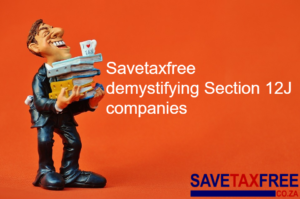A beginners guide to ETFs
The Intellidex team | 14 February 2019
What is it?
Exchange-traded funds (ETFs) are a fantastic investment vehicle for novice investors. First, they’re passively managed, which means all the investments are pre-determined – the investment decisions are not made by a fund manager earning a fat salary and charging you a fortune to do so.
How does it work?
Each ETF invests in a specific theme or sector. For example, a “top 40” ETF invests in the biggest 40 companies on the JSE. Buy the ETF and you effectively become a shareholder in the biggest companies in South Africa. There are also ETFs focused on mining companies, financial companies and a range of other categories such as bonds and property, so you have many options. And the cherry on top: they qualify for a tax-free savings account. To invest in an ETF, you would need to open an account with a stockbroker.
What’s the risk?
Any investment in the stock market (an investment in equities) carries high risk, because company shares are more volatile than, say, cash investments that generate a steady stream of interest income. So, your ETF investment could lose money, especially in the short term – thus it is deemed to carry high risk. However, research has shown that over the long term, equities usually outperform cash investments.
A general rule of thumb is that the longer your investment period, the higher your risk appetite. This is because, if your investment portfolio takes a hit in the short term, it has time to recover and appreciate further in value. So young people entering the world of work usually would have a high proportion of their portfolio invested in equities. For someone close to retirement, there is a shorter recovery period available so it’s usually better for them to be in less risky investments such as bonds and cash.
While ETFs or other equity investments carry higher risk, they offer the opportunity to earn far greater returns than the often measly interest rate banks offer on a call account.
Looking for a more detailed analysis?
For excellent guidance on investing through ETFs, Intellidex (owner of this website) releases monthly ETF notes by our friendly neighbourhood analysts Phibion Makuwerere and Orin Tambo. They also offer great advice on how to compile an investment portfolio of ETFs.
One more thing
As with any investment portfolio, don’t put all your eggs in one basket. Diversify – across asset classes such as bonds and equities and across sectors such as financials and industrials.
If you’re invested in only one vehicle and that one crashes and burns, you’re toast. For example, running up to the 2010 Fifa World Cup in South Africa, construction companies were flying high. After the event, due to numerous reasons, that sector collapsed and is yet to recover. Had you been invested only in a construction sector ETF, you’d be one unhappy investor. However, if only a small part of your portfolio was in construction but you were also invested in other areas, your overall portfolio wouldn’t have taken a big hit.
If you’re not happy it’s easy to switch ETFs – and remember there is lots of quality investment guidance out there if you need it. Just ensure it’s from a credible source.
What’s next?
The directory below is a full list of all exchange-traded funds (ETFs) that are eligible for a TFSA. It lists useful information such as the ETF’s underlying investments, costs (total expense ratio), historical returns, risk level and ideal investment period. For more detailed information, each Each ETF also has to have a fund factsheet, usually updated quarterly, which can be found on the issuer’s website.






